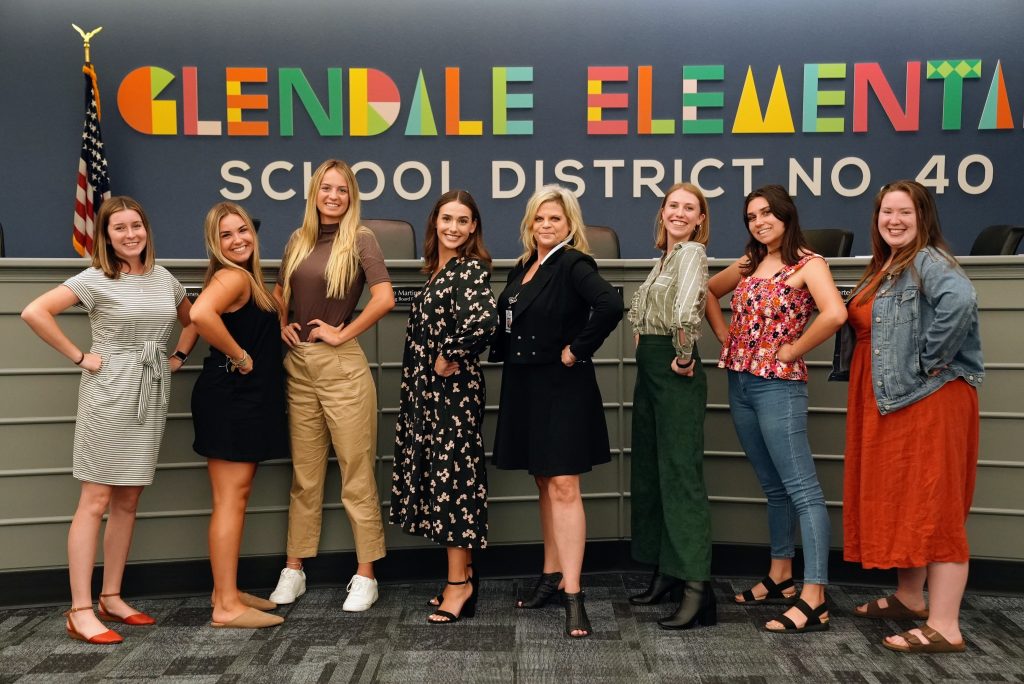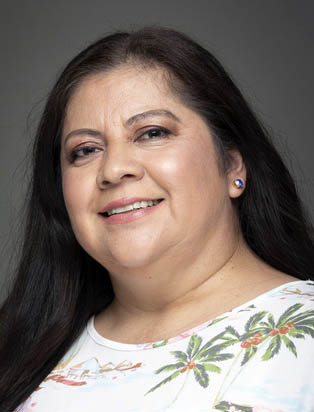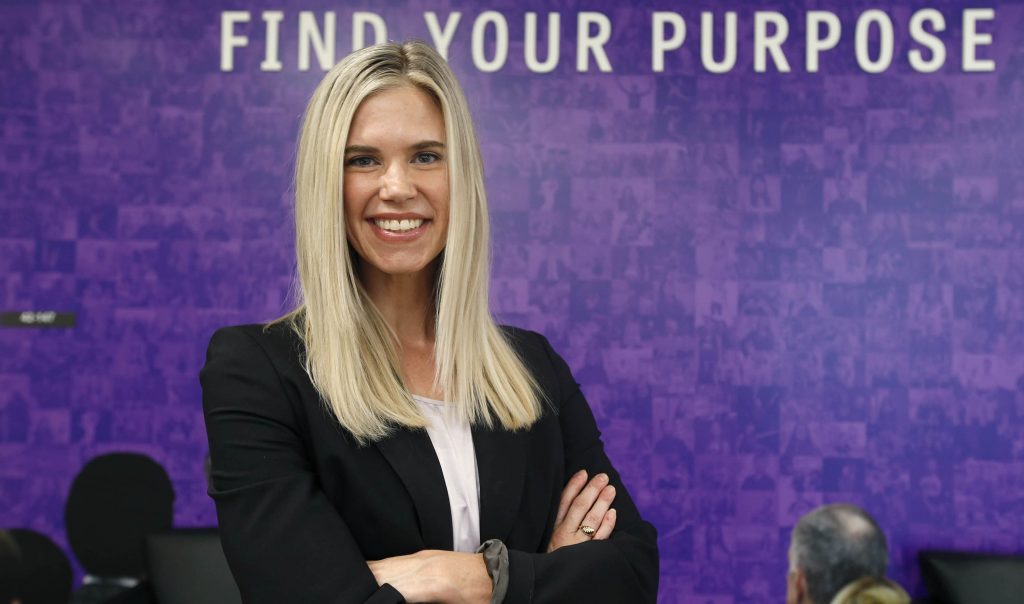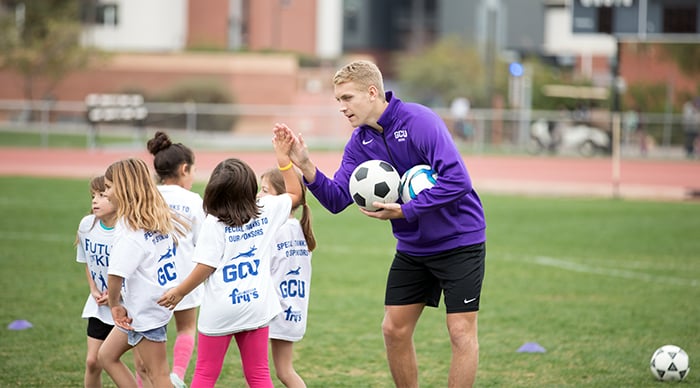
Canyon Teacher Residencies provide students with path to pay
This fall, Grand Canyon University students have become a major source of teachers in Arizona’s short-staffed K12 classrooms.
Canyon Teacher Residencies – a new designation for the College of Education’s six pathways for students to earn pay while teaching – has led more than 270 GCU students to paid positions at schools in Arizona and Nevada while completing program courses or certifications.
They are proving vital to a system in short supply of teachers. The Arizona School Personnel Administrators' latest survey of 130 Arizona school districts shows that 26.6% of vacancies are unfilled – and 2,577 positions remain open.
Thousands more are filled by teachers using alternative pathways, such as the Arizona Substitute Teaching Residency. Seventy GCU students are earning pay as substitute teachers in that pathway.

“The problem is worse. It went from a teacher shortage to a substitute shortage,” said COE Assistant Professor Claudia Coleman, who helped launch the initiative last year.
Coleman directed students to four area schools, but it grew to 10 this fall. Some schools are so short that an assistant principal takes a classroom in the morning and the principal in the afternoon, Coleman said. Another school was so short-staffed it couldn’t even return GCU’s offer for assistance; its administrator was too busy as a classroom sub.
Three school districts are on a waiting list to hire GCU students as subs.
Junior Amelia Thoresen subs two days a week a Glenn F. Burton Elementary School in Glendale, just 10 minutes from GCU’s campus, and earns $165 a day.
“I get paid, get practicum hours and help schools who are short of teachers – a win for everybody,” said Thoresen, who added that the Glendale School District offered her a job as a long-term sub, splitting a classroom with another GCU student. “It’s bringing my career to life. It’s great hands-on experience.”
Said COE Faculty Chair Dr. Alicia Kozimor, “We know sometimes students work two jobs to go to college, so why work at Chick-fil-A, even though we love Chick-fil-A, when you can work in the classroom and get the professional experience that can help you when you get your own classroom?”
She added, “Historically, student teaching was free labor.”
That’s why another valuable pathway is the Arizona Student Teaching Intern Certificate, where eight students not only get their student teaching experience but are paid and are the teacher of record. The teacher candidates are without direct supervision, but COE provides wraparound support from counselors, faculty and staff, which is part of GCU's residency approach to ensure teacher candidates feel supported. Part of the residency model is providing them guidance, so they feel embedded in the school but supported by the college.
It’s one of the goals behind GCU’s push for Canyon Teacher Residencies – elevating teaching as a profession.
They also can be employed by districts as tutors, paraprofessionals and teacher’s aides in the various pathways, while getting immersive support from GCU and the school where they are employed. Other students are in alternative pathways to licensure. There are some requirements to have COE courses completed and state certifications before entering those jobs.

“There’s a hunger in teachers to serve. But there’s also a hunger in teachers to feel validated and to be seen as professionals,” said COE Dean Dr. Meredith Critchfield. “Canyon Teacher Residencies check those three boxes by allowing our teacher candidates the opportunity to serve students in K-12 schools, work toward earning their education degree and teacher certification, while also reaping the financial benefits for their work.”
At the recent COE fall kickoff event in GCU Arena, the largest crowd of students at various breakouts was huddled around the information session on earning pay as a student teacher, associate or sub.
“It’s a good way to shift to paid internships for teachers, like other industries,” Critchfield said at the event. “Lawyers and doctors get paid for internships, why shouldn’t teachers?”
Student Jenna Brue would agree. She’s getting paid as a sub at Kuban Elementary School just south of GCU while completing her practicum.
It’s not for the faint of heart.
“You are thrown into the circus as the crowd master, and you need to know how to do every play,” she said. “They kids feel you out to see if you are going to be a strict teacher or more lenient. They are going to try to get away with more things because they think you don’t know the rules.
“Sometimes, the teacher is gone unexpectedly and leaves no plans, so you have two worksheets that don’t last you seven hours. You really need to know the curriculum for each grade level.”
Why not hire someone that is going through the pathway, and you know they have a heart for being in the classroom?
Dr. Alicia Kozimor
She must adapt to numerous grade levels and ages on the fly, or to classrooms where some students only speak Spanish.
“With all that, I feel like I could have a classroom right now,” Brue said.
In fact, many schools are keen to hire GCU students full time after they finish their studies.
“Having our students is a great middle ground,” Kozimor said. “Why not hire someone that is going through the pathway, and you know they have a heart for being in the classroom?”
Here are the Arizona Department of Education and/or district-support pathways that make up Canyon Teacher Residencies and the number of GCU students filling roles this fall:
- Arizona Substitute Teaching Residency: Teacher candidates serve schools as paid subs while completing field experience hours for coursework and must obtain their emergency substitute certification through the ADE.
- Arizona Student Teaching Intern Certificate: Available to students enrolled in student teaching capstone with a request from the school or district for an issuance of the certificate.
- Teaching Associate Residency: Also called a teacher’s aide, paraprofessional or instructional aide, candidates serve in schools as paid support staff in classrooms while completing field experience hours for coursework.
- Canyon L.E.A.P. to Teach: A pathway for Arizona candidates who are the teacher of record in their own classrooms that consist of grade-level courses, available for credits toward select COE master’s programs. Must have passed state content exams.
- Arizona Alternative Teaching Program: Allows master’s candidates to teach in classroom while pursuing their degree with an ADE certification.
- Nevada Alternative Route to Licensure: A route to licensure from individuals who have secured a contract with a district in need, are in the state of Nevada and are enrolled in select master’s programs.
Grand Canyon University senior writer Mike Kilen can be reached at [email protected] or at 602-639-6764.
***
Related content:
GCU News: GCU students help fill need for substitute teachers
GCU News: GCU helps stem teaching, nursing shortages
GCU News: GCU grads fill a primary school's teacher shortage















